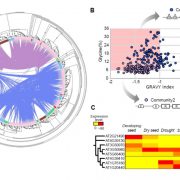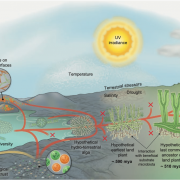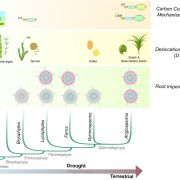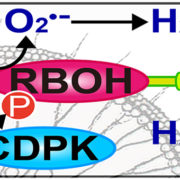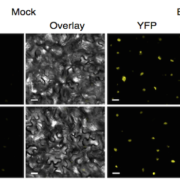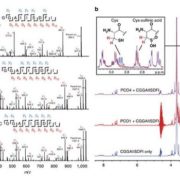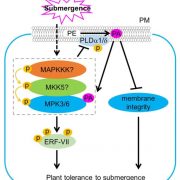Update: Signal dynamics and interactions during flooding stress
By
Abstract
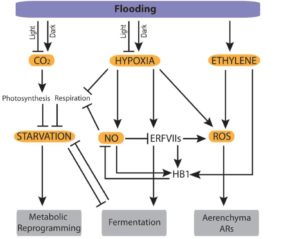 Flooding is detrimental for nearly all higher plants including crops. The compound stress elicited by slow gas exchange and low light levels under water is responsible for both a carbon and an energy crisis ultimately leading to plant death. The endogenous concentrations of four gaseous compounds: oxygen, carbon dioxide, ethylene and nitric oxide, change during submergence of plant organs in water. These gases play a pivotal role in signal transduction cascades leading to adaptive processes such as metabolic adjustments and anatomical features. Of these gases, ethylene is seen as the most consistent, pervasive and reliable signal of early flooding stress most likely in tight interaction with the other gases. The production of reactive oxygen species (ROS) in plant cells during flooding and directly after subsidence, during which the plant is confronted with high light and oxygen levels, is characteristic for this abiotic stress. Low, well-controlled levels of ROS are essential for adaptive signaling pathways, in interaction with the other gaseous flooding signals. On the other hand, excessive uncontrolled bursts of ROS can be highly damaging for plants. A fine-tuned balance is therefore important with a major role for ROS production and scavenging. Our understanding of the temporal dynamics of the four gases and ROS is basal, whereas it is likely that they form a signature readout of prevailing flooding conditions and subsequent adaptive responses.
Flooding is detrimental for nearly all higher plants including crops. The compound stress elicited by slow gas exchange and low light levels under water is responsible for both a carbon and an energy crisis ultimately leading to plant death. The endogenous concentrations of four gaseous compounds: oxygen, carbon dioxide, ethylene and nitric oxide, change during submergence of plant organs in water. These gases play a pivotal role in signal transduction cascades leading to adaptive processes such as metabolic adjustments and anatomical features. Of these gases, ethylene is seen as the most consistent, pervasive and reliable signal of early flooding stress most likely in tight interaction with the other gases. The production of reactive oxygen species (ROS) in plant cells during flooding and directly after subsidence, during which the plant is confronted with high light and oxygen levels, is characteristic for this abiotic stress. Low, well-controlled levels of ROS are essential for adaptive signaling pathways, in interaction with the other gaseous flooding signals. On the other hand, excessive uncontrolled bursts of ROS can be highly damaging for plants. A fine-tuned balance is therefore important with a major role for ROS production and scavenging. Our understanding of the temporal dynamics of the four gases and ROS is basal, whereas it is likely that they form a signature readout of prevailing flooding conditions and subsequent adaptive responses.


